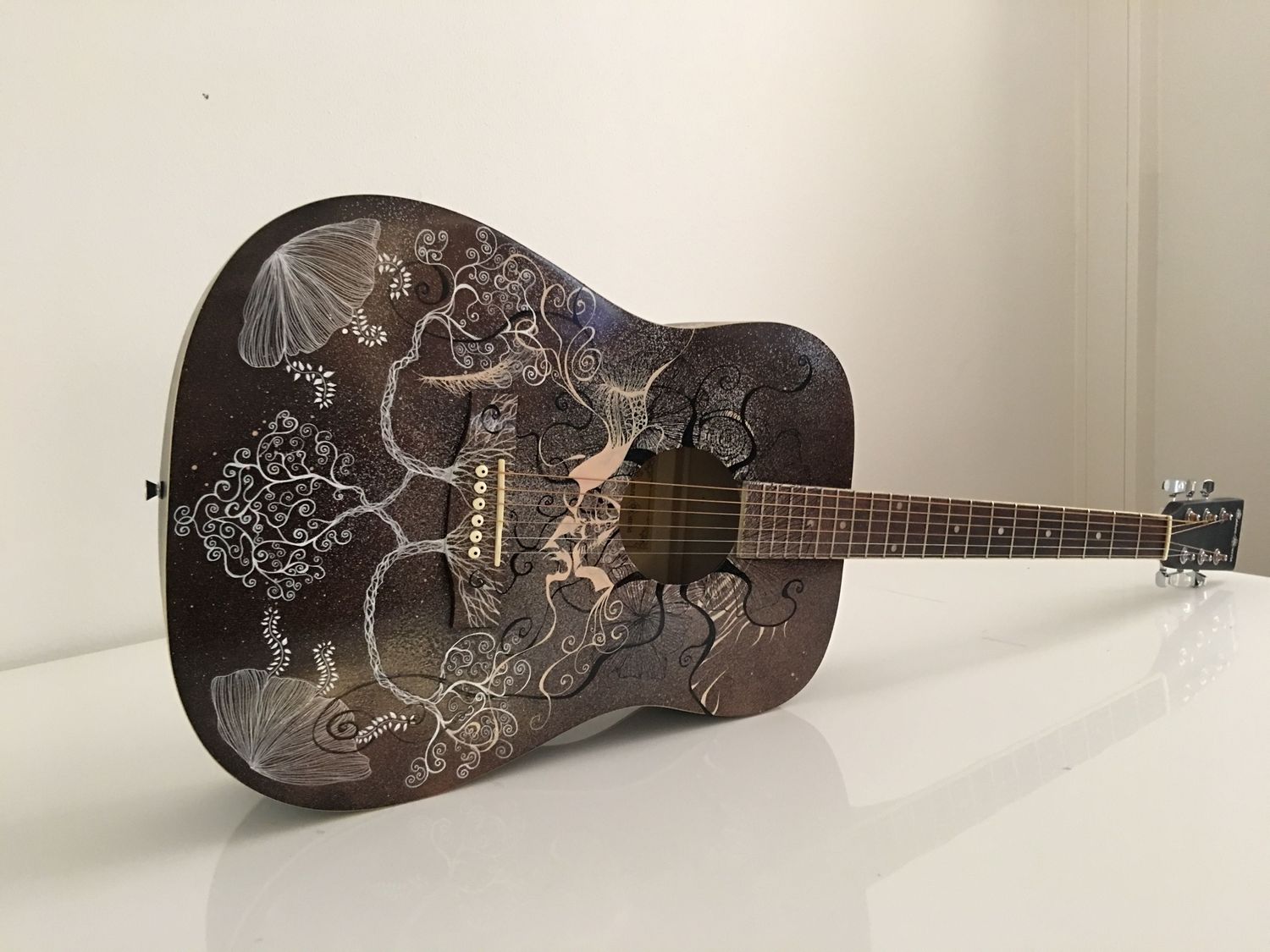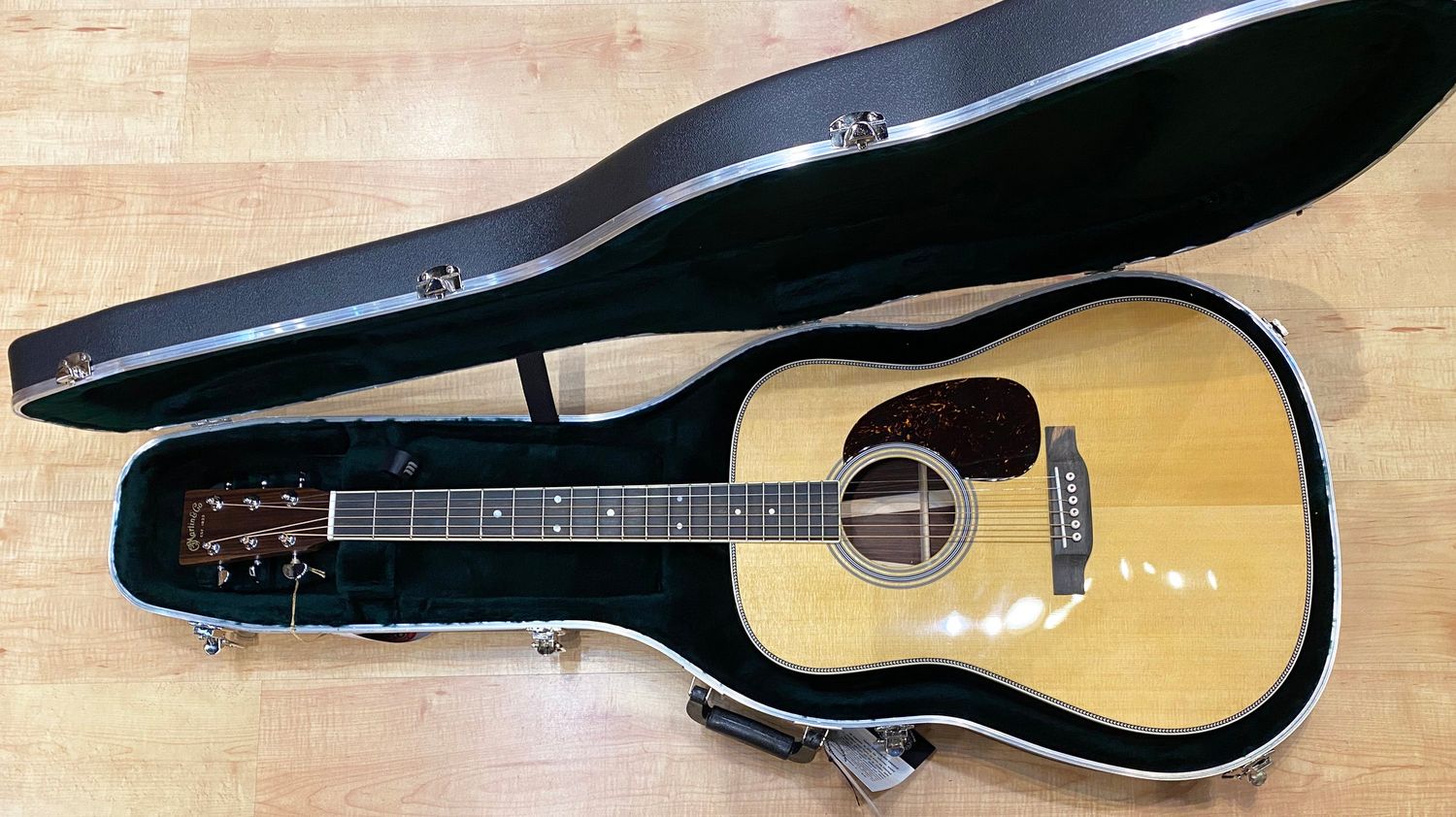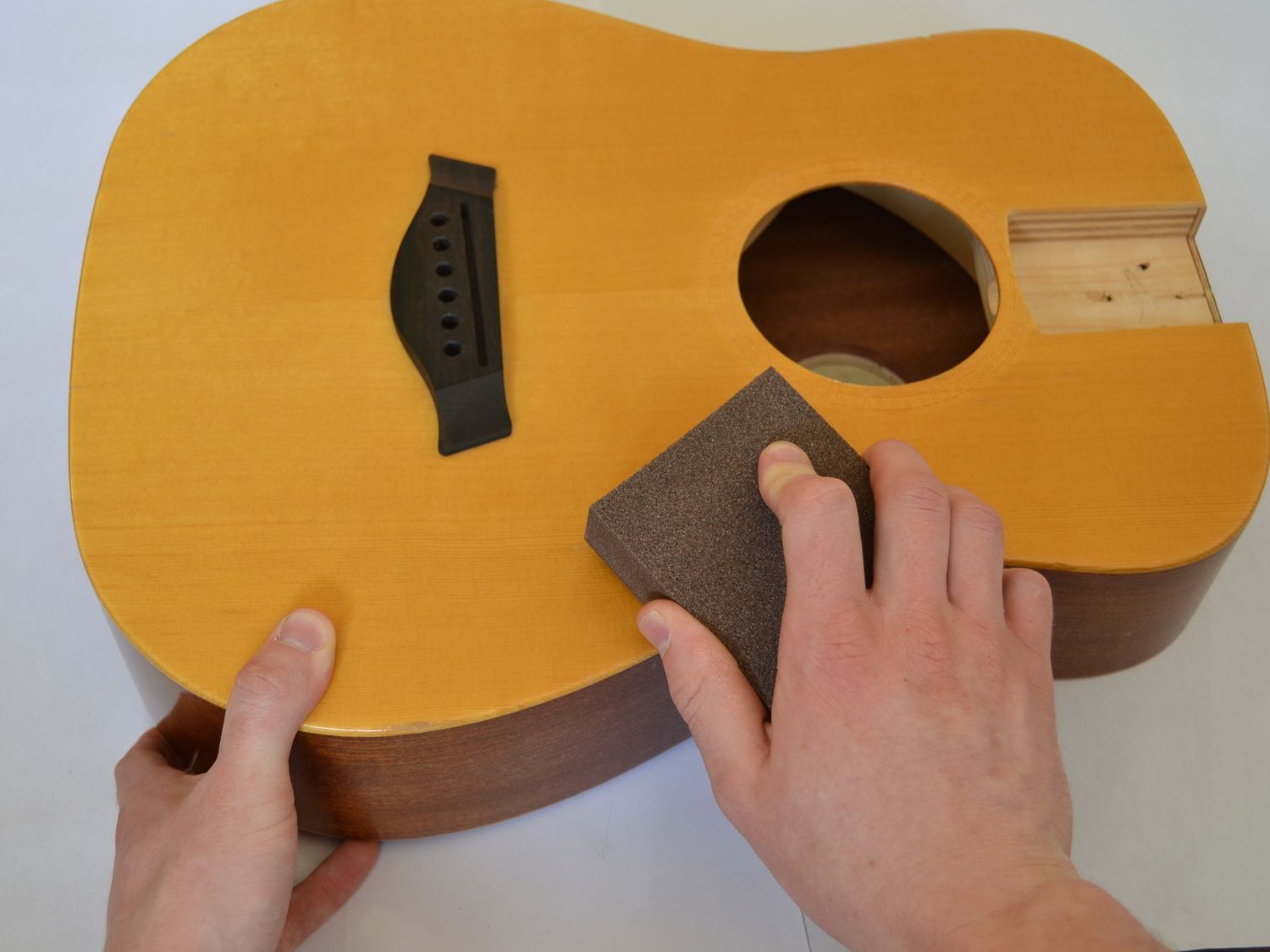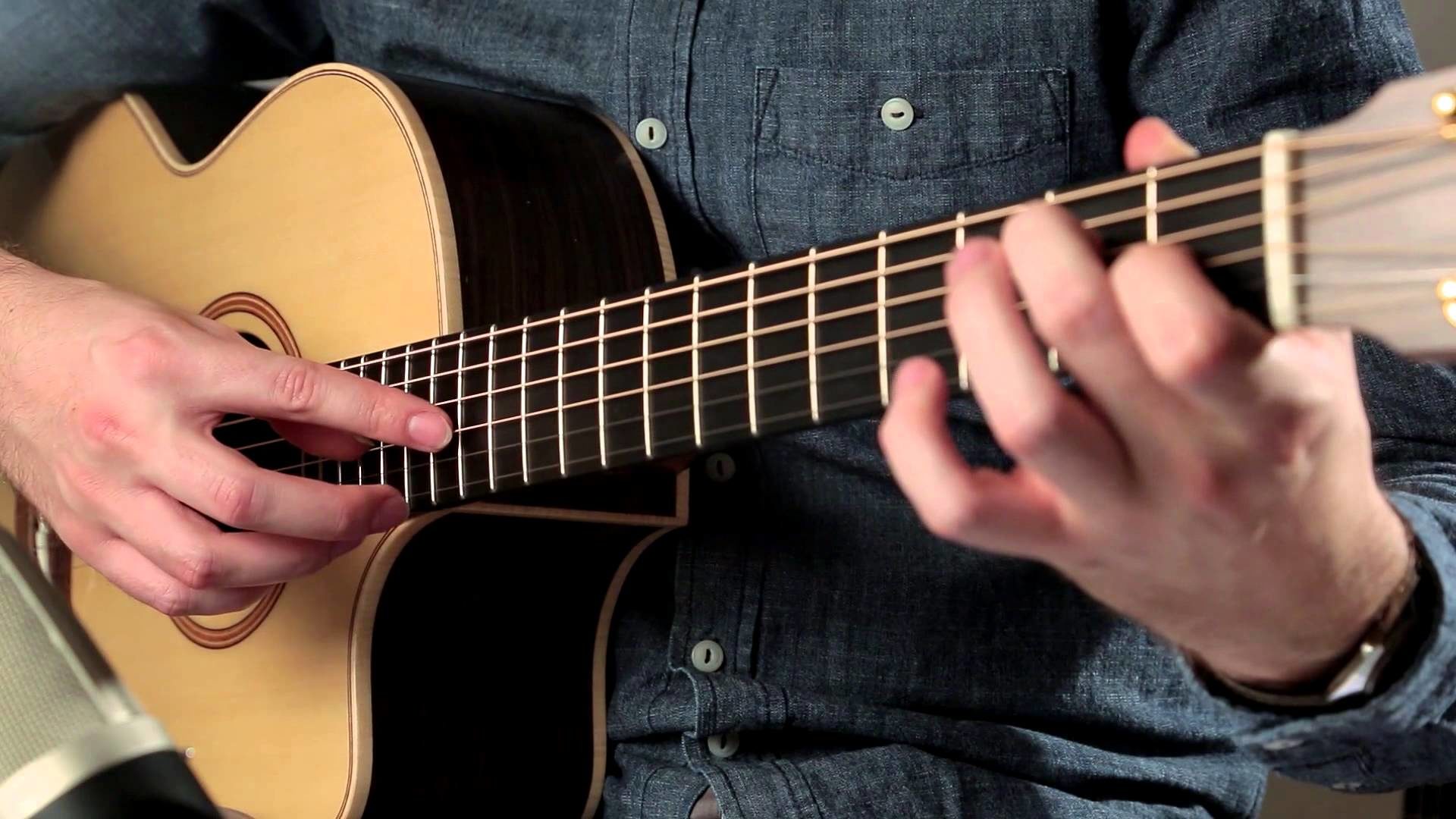Home>Production & Technology>Acoustic>How To Measure Action On Acoustic Guitar
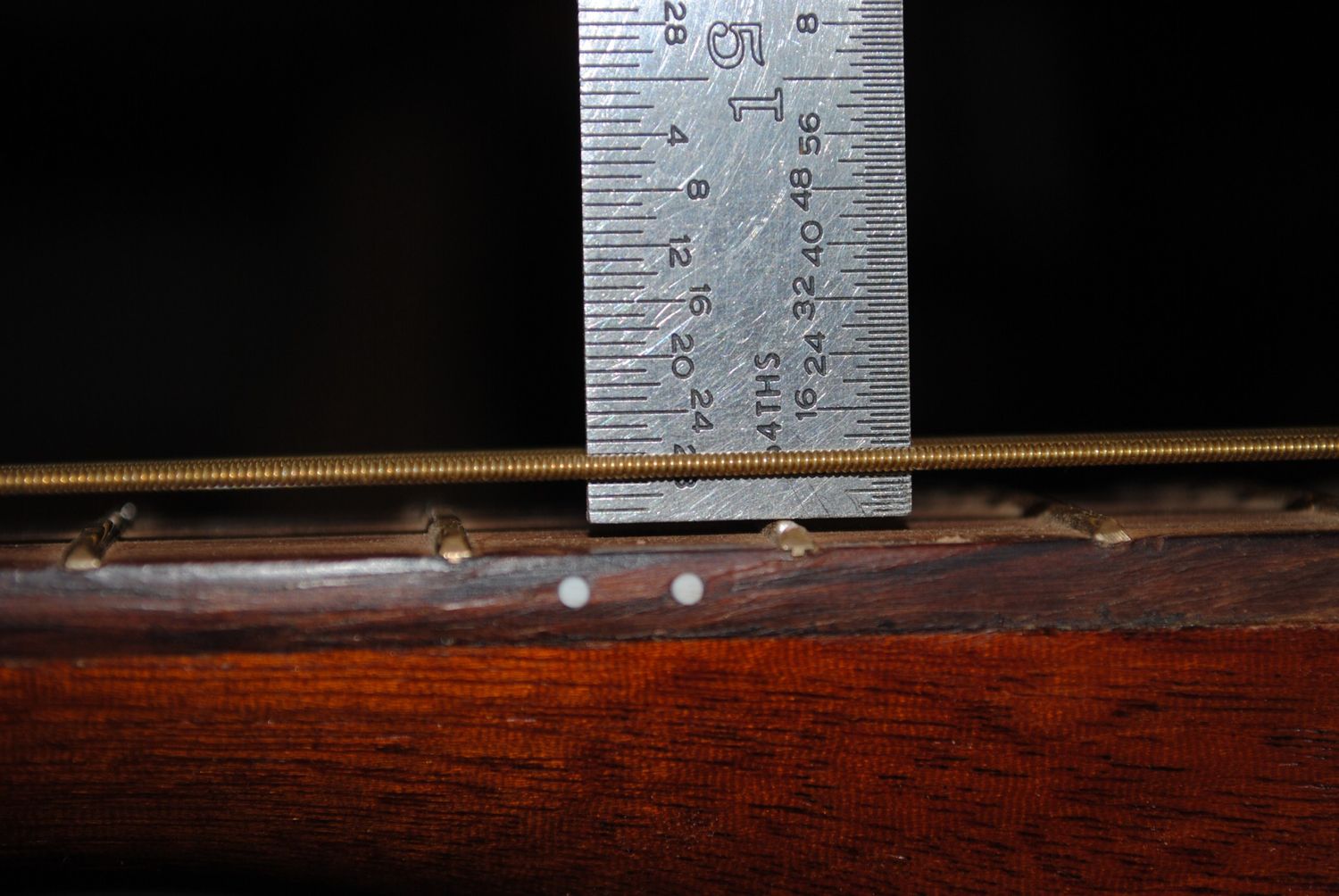

Acoustic
How To Measure Action On Acoustic Guitar
Published: March 11, 2024
Learn how to measure action on acoustic guitar for optimal playability and sound quality. Follow these steps to achieve the perfect setup.
(Many of the links in this article redirect to a specific reviewed product. Your purchase of these products through affiliate links helps to generate commission for AudioLover.com, at no extra cost. Learn more)
Table of Contents
Introduction
When it comes to playing the acoustic guitar, one of the most crucial factors that can significantly impact the playability and sound of the instrument is the action. The term "action" refers to the distance between the strings and the fretboard. It directly affects how easy or challenging it is to press down the strings and produce clear, resonant notes. Understanding how to measure and adjust the action on an acoustic guitar is essential for any guitarist who wants to optimize their playing experience.
The action of an acoustic guitar is not only a matter of personal preference but also a key aspect of the instrument's overall performance. Proper action ensures that the strings are neither too high nor too low above the fretboard, allowing for comfortable fretting and smooth transitions between chords and notes. Additionally, the action directly influences the guitar's intonation, which affects the accuracy of the instrument's pitch across the fretboard.
In this comprehensive guide, we will delve into the intricacies of measuring and adjusting the action on an acoustic guitar. From selecting the right tools to understanding the specific measurements at the nut and the 12th fret, we will explore the step-by-step process of achieving an optimal action setup. Whether you are a seasoned guitarist or a beginner looking to enhance your playing experience, mastering the art of measuring and adjusting the action will undoubtedly elevate your musical journey.
Understanding the nuances of action measurement and adjustment empowers guitarists to tailor their instruments to their unique playing styles and preferences. By gaining proficiency in this fundamental aspect of guitar maintenance, players can unlock the full potential of their acoustic guitars, ensuring that every note resonates with clarity and precision. So, let's embark on this insightful exploration of measuring and adjusting the action on acoustic guitars, equipping ourselves with the knowledge and skills to optimize our musical expression.
Choosing the Right Tools
When it comes to measuring and adjusting the action on an acoustic guitar, having the appropriate tools at your disposal is essential for achieving accurate and reliable results. The following tools are indispensable for this task:
-
Capo: A capo is a crucial tool for temporarily raising the pitch of the strings. When measuring the action, placing a capo on the first fret allows for easier access to the nut area, facilitating precise measurements and adjustments.
-
Feeler Gauges: These thin, flexible strips of metal are used to measure the distance between the strings and the frets. Feeler gauges come in various thicknesses, enabling precise assessment of the string height at different points along the fretboard.
-
Ruler or Action Gauge: A ruler with precise markings or a specialized action gauge is essential for measuring the distance between the strings and the frets at specific locations, such as the nut and the 12th fret. This tool provides accurate numerical measurements, aiding in the assessment and adjustment of the action.
-
Tuner: A reliable tuner is indispensable for ensuring that the guitar is accurately tuned before measuring the action. Proper tuning is essential for obtaining precise measurements and making informed adjustments to the string height.
-
Screwdriver or Allen Wrench: Depending on the type of guitar bridge and saddle, a screwdriver or an Allen wrench may be necessary for adjusting the saddle height. This tool allows for fine-tuning the action by raising or lowering the saddle to achieve the desired string height.
-
Truss Rod Wrench: In some cases, adjusting the truss rod may be necessary to optimize the action. A truss rod wrench is specifically designed for making adjustments to the truss rod, which can influence the neck relief and overall playability of the guitar.
By ensuring that these essential tools are readily available, guitarists can approach the task of measuring and adjusting the action with confidence and precision. Each tool serves a specific purpose in the process, enabling meticulous assessment and fine-tuning of the string height to achieve an optimal playing experience. With the right tools at hand, guitarists can embark on the journey of action measurement and adjustment, unlocking the full potential of their acoustic guitars with skill and expertise.
Tuning the Guitar
Before delving into the precise measurements and adjustments associated with the action on an acoustic guitar, it is imperative to ensure that the instrument is accurately tuned. Tuning the guitar lays the foundation for obtaining precise and reliable measurements, as the string tension directly impacts the action and overall playability.
Begin by using a reliable tuner to tune each string to its designated pitch. Whether using a clip-on tuner, pedal tuner, or a smartphone app, the goal is to achieve optimal tuning across all strings. A well-tuned guitar not only facilitates accurate action measurements but also ensures that the instrument produces clear, resonant tones when played.
As you tune each string, pay close attention to the pitch and make any necessary adjustments to achieve perfect tuning. The process of tuning the guitar serves as a critical preparatory step, setting the stage for assessing and optimizing the action with precision and accuracy.
Once the guitar is tuned to perfection, the stage is set for the meticulous measurement and adjustment of the action, a process that directly influences the playability and sonic characteristics of the instrument. With the guitar in tune and the essential tools at hand, guitarists are poised to embark on the journey of action measurement and adjustment, elevating their playing experience to new heights.
By ensuring that the guitar is in tune before proceeding with action measurement and adjustment, guitarists lay a solid groundwork for achieving optimal playability and tonal quality. Tuning the guitar serves as the initial step in the broader process of guitar maintenance and optimization, setting the stage for a seamless and rewarding experience as players delve into the intricacies of action measurement and adjustment.
In summary, tuning the guitar is a fundamental prerequisite for accurately assessing and adjusting the action on an acoustic guitar. By prioritizing precise tuning before engaging in action measurement and adjustment, guitarists set the stage for a thorough and meticulous process that ultimately enhances the playability and sonic performance of the instrument.
Measuring Action at the Nut
Measuring the action at the nut is a critical step in assessing the playability and overall performance of an acoustic guitar. The nut, located at the top of the fretboard, plays a pivotal role in determining the initial height of the strings and their spacing. Achieving the optimal action at the nut is essential for ensuring comfortable fretting, clear intonation, and smooth transitions between open chords and notes.
To measure the action at the nut, begin by placing a capo on the first fret of the guitar. This step effectively simulates the function of the nut, allowing for accurate assessment of the string height at the nut itself. With the capo in place, use a feeler gauge to measure the distance between the bottom of the strings and the top of the first fret. The ideal action at the nut typically ranges from 0.018 to 0.022 inches for the high E string and 0.028 to 0.032 inches for the low E string, although these measurements may vary based on individual playing preferences and guitar setup.
Using a ruler or specialized action gauge, carefully measure the gap between the strings and the first fret, ensuring that the measurements are consistent across all strings. This meticulous assessment provides valuable insights into the initial string height at the nut, allowing for precise adjustments to achieve the desired action.
If the action at the nut is too high, it can result in excessive string tension and make fretting challenging, especially for beginners or players with smaller hands. Conversely, an excessively low action at the nut may lead to buzzing or fretting out, compromising the clarity and sustain of the notes. By accurately measuring the action at the nut, guitarists can identify any discrepancies and make informed adjustments to optimize the string height, striking a balance that promotes effortless playability and optimal tonal characteristics.
Once the action at the nut has been measured, guitarists can proceed to make necessary adjustments to achieve the desired string height. Depending on the specific requirements, adjustments may involve filing the nut slots to lower the action or replacing the nut with a custom-made or pre-slotted nut to achieve the desired string spacing and height. By meticulously measuring and fine-tuning the action at the nut, guitarists can tailor their instruments to their unique playing styles, ensuring that every note is met with comfort and clarity.
Mastering the art of measuring and adjusting the action at the nut empowers guitarists to optimize the playability and sonic performance of their acoustic guitars. By paying close attention to this crucial aspect of guitar setup, players can unlock the full potential of their instruments, fostering a seamless and enjoyable playing experience that resonates with precision and musical expression.
Measuring Action at the 12th Fret
Measuring the action at the 12th fret is a pivotal step in evaluating the playability and tonal characteristics of an acoustic guitar. Located at the midpoint of the fretboard, the 12th fret serves as a crucial reference point for assessing the string height and overall setup of the instrument. Achieving the optimal action at the 12th fret is essential for ensuring comfortable playability, precise intonation, and consistent tonal quality across the fretboard.
To measure the action at the 12th fret, begin by ensuring that the guitar is properly tuned, laying the foundation for accurate assessments. With the guitar in tune, use a ruler or specialized action gauge to measure the distance between the bottom of the strings and the top of the 12th fret. This measurement provides valuable insights into the string height at a critical point along the fretboard, allowing for a comprehensive assessment of the instrument's setup.
The ideal action at the 12th fret typically ranges from 0.078 to 0.093 inches for the high E string and 0.078 to 0.098 inches for the low E string, although these measurements may vary based on individual playing preferences and guitar setup. By meticulously measuring the action at the 12th fret, guitarists can gain a deeper understanding of the string height and make informed adjustments to optimize the playability and tonal characteristics of the instrument.
Consistency in the action measurements across all strings is crucial, ensuring that the guitar offers uniform playability and tonal response. By assessing the string height at the 12th fret, guitarists can identify any discrepancies and make precise adjustments to achieve the desired action, promoting effortless fretting and consistent tonal quality across the entire fretboard.
If the action at the 12th fret is too high, it can result in increased string tension and make fretting challenging, impacting the overall playability of the instrument. Conversely, an excessively low action at the 12th fret may lead to buzzing or fretting out, compromising the clarity and sustain of the notes. By meticulously measuring and fine-tuning the action at the 12th fret, guitarists can tailor their instruments to their unique playing styles, ensuring that every note resonates with clarity and precision.
Mastering the art of measuring and adjusting the action at the 12th fret empowers guitarists to optimize the playability and tonal performance of their acoustic guitars. By paying close attention to this critical aspect of guitar setup, players can unlock the full potential of their instruments, fostering a seamless and enjoyable playing experience that resonates with precision and musical expression.
Making Adjustments
After meticulously measuring the action at both the nut and the 12th fret, the next crucial step in the process of optimizing the action on an acoustic guitar involves making precise adjustments to achieve the desired string height. These adjustments play a pivotal role in tailoring the instrument to the player's unique preferences and playing style, ultimately enhancing the playability and tonal characteristics of the guitar.
When making adjustments to the action, it is essential to approach the process with patience and precision, ensuring that each modification contributes to an optimal setup. Depending on the specific measurements obtained during the assessment, the following adjustments may be necessary to achieve the desired action:
-
Nut Adjustment: If the action at the nut is found to be too high or too low, adjustments to the nut slots may be required. Carefully filing the nut slots using specialized nut files can lower the action, allowing for smoother fretting and improved playability. Conversely, if the action is too low at the nut, replacing the nut with a custom-made or pre-slotted nut may be necessary to achieve the desired string spacing and height.
-
Saddle Adjustment: At the 12th fret, if the action is determined to be outside the optimal range, adjustments to the saddle height are instrumental in achieving the desired string height. Using a screwdriver or Allen wrench, the saddle can be raised or lowered to fine-tune the action, ensuring uniform playability and tonal response across all strings.
-
Truss Rod Adjustment: In cases where the neck relief significantly impacts the action, making adjustments to the truss rod may be necessary. Using a truss rod wrench, carefully adjusting the truss rod allows for precise control over the neck relief, influencing the overall playability and string height across the fretboard.
By approaching these adjustments with meticulous attention to detail, guitarists can effectively tailor the action to their specific preferences, ensuring that the instrument offers effortless playability and consistent tonal quality. It is important to make incremental adjustments, regularly assessing the impact on playability and tonal characteristics to achieve an optimal setup.
Ultimately, the process of making adjustments to the action on an acoustic guitar is a dynamic and iterative journey, requiring a keen understanding of the instrument's setup and the player's individual requirements. By embracing this process with care and precision, guitarists can unlock the full potential of their instruments, fostering a seamless and enjoyable playing experience that resonates with clarity, comfort, and musical expression.
Conclusion
In conclusion, mastering the art of measuring and adjusting the action on an acoustic guitar is a transformative journey that empowers guitarists to optimize the playability, tonal characteristics, and overall performance of their instruments. By delving into the intricacies of action measurement and adjustment, players gain valuable insights into the critical factors that influence the comfort, clarity, and sonic expression of their guitars.
Throughout this comprehensive guide, we have explored the essential steps involved in achieving an optimal action setup, from selecting the right tools to making precise adjustments at the nut and the 12th fret. By meticulously measuring the string height and assessing the playability at these key points, guitarists can tailor their instruments to their unique playing styles, ensuring that every note resonates with precision and comfort.
The process of measuring and adjusting the action on an acoustic guitar is not merely a technical endeavor but a deeply personal and creative pursuit. It allows players to fine-tune their instruments to reflect their musical preferences, fostering a deeper connection between the guitarist and their guitar. Whether aiming for a lower, more responsive action for intricate fingerstyle playing or a slightly higher action for robust strumming, the ability to customize the action empowers guitarists to fully express their musical identity.
Furthermore, the journey of action measurement and adjustment underscores the importance of meticulous craftsmanship and attention to detail in guitar maintenance. By honing the skills required to assess and optimize the action, guitarists develop a profound understanding of their instruments, cultivating a deeper appreciation for the nuances of playability and tonal response.
Ultimately, the process of measuring and adjusting the action on an acoustic guitar is a testament to the dedication and artistry of guitarists who seek to unlock the full potential of their instruments. It is a journey that transcends technical proficiency, encompassing a profound connection between the player, the instrument, and the music they create. As guitarists embark on this transformative journey, they equip themselves with the knowledge and skills to elevate their playing experience, ensuring that every chord, melody, and riff is met with effortless playability and resonant clarity.
In embracing the art of action measurement and adjustment, guitarists embark on a path of continuous refinement, where each modification contributes to a harmonious union between player and instrument. Through this process, players not only optimize the performance of their guitars but also deepen their musical expression, creating a symphony of seamless playability and captivating tonal nuances.

